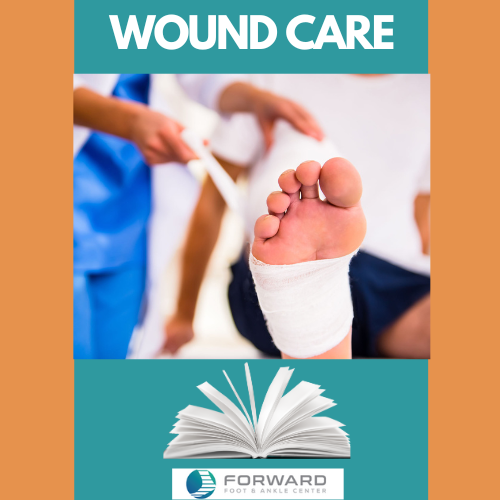
Services We Offer Diabetic Patients in Our Livermore Clinic
At Forward Foot & Ankle Center, we are committed to whole-body wellness. We help our patients with diabetes understand the importance of managing their diabetes as we care for their feet. We encourage these patients to schedule regular visits for the following services:
- Foot inspections. The most effective way to prevent foot ulcers is to catch and treat wounds promptly. When we see patients with peripheral neuropathy, we conduct thorough inspections of the feet and areas between the toes to identify any cuts, cracks, or blisters that could develop into an ulcer and treat them with topical ointments and antibiotics.
- Wound care. In patients with active wounds, we inspect, clean, and dress the injury to prevent infection and promote healing. In wounds that resist treatment, we might remove the infected tissue or place the foot in a soft cast and recommend rest and elevation.
- Treatment for dry, cracked skin. People with diabetes often also experience extremely dry and cracked feet due to poor blood circulation and reduced perspiration. We can treat cracked feet with maximum-strength moisturizers, oils, and medications. Dry skin is dangerous because the cracks can open up and bleed, creating a wound that won’t heal.
- Toenail trimming. Our patients with diabetes are often elderly or have mobility issues that make it hard to reach their feet. As a result, they struggle to care for their toenails properly. Because ingrown toenails are another risk factor for developing a foot ulcer, we offer toenail trimming and ingrown toenail treatment to prevent wounds from developing.
If you are having a hard time controlling your diabetes, schedule an appointment in our Livermore office for a foot health assessment and treatment plan.
When a Foot Ulcer Is a Serious Problem
If you have not been proactive about your foot care, you might not discover a foot ulcer until it is too late. At this point, it is important that you seek medical treatment right away. Signs that a foot wound has developed into a dangerous ulcer include:
- The wound is surrounded by black tissue, indicating gangrene.
- Your bone is visible at the bottom of the wound.
- There is an odor coming from the wound, indicating infection.
- The wound is larger than a quarter.
- You see flesh damage on the top of your foot.
If you or a caregiver sees any of these symptoms, you should go to your local emergency room for immediate treatment. Regular visits to a Livermore podiatrist can prevent this kind of emergency.

